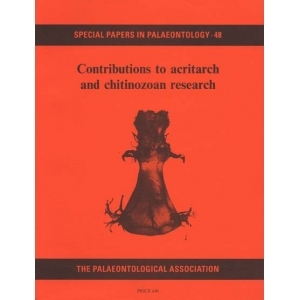
Special papers in Palaeontology: 48
<br />1993
<br />
<br />Contributions to acritarch and chitinozoan research.
<br />S G Molyneux and K J Dorning (Eds)
<br />
<br />139 pp., 22 pls, 28 text-figs.
<br />
<br />ABSTRACT. Four chitinozoan microfaunas are described from the upper part of the Chaleurs Group in the northeastern Gaspe Peninsula. The lowest assemblage is from the Roncelles Formation and is mainly composed of damaged forms of Ancyrochitina and Angochitina. Each of the three succeeding members of the Indian Point Formation is characterized by a distinctive assemblage. The association of Muscochitina aff. M. muscosa and Urnochitina urna in the Rosebush Cove Member suggests a Piidoli (late Silurian) age. The succeeding Petit Portage Member yields another typical Piidoli assemblage, characterized by Linochitina klonkensis and U. urna. A Lochkovian (Lower Devonian) chitinozoan microfauna is recognized in the lower part of the Quay Rock Member, diagnostic species being Angochitina chlupaci, Eisenackitina bohemica and Margachitina catenaria catenaria. Similarities between upper Silurian and Lower Devonian assemblages from eastern Canada, south-west Europe and North Africa indicate a decrease of the strong differentiation that prevailed during Ordovician and early Silurian times between Laurentian and north Gondwanan chitinozoan microfaunas.